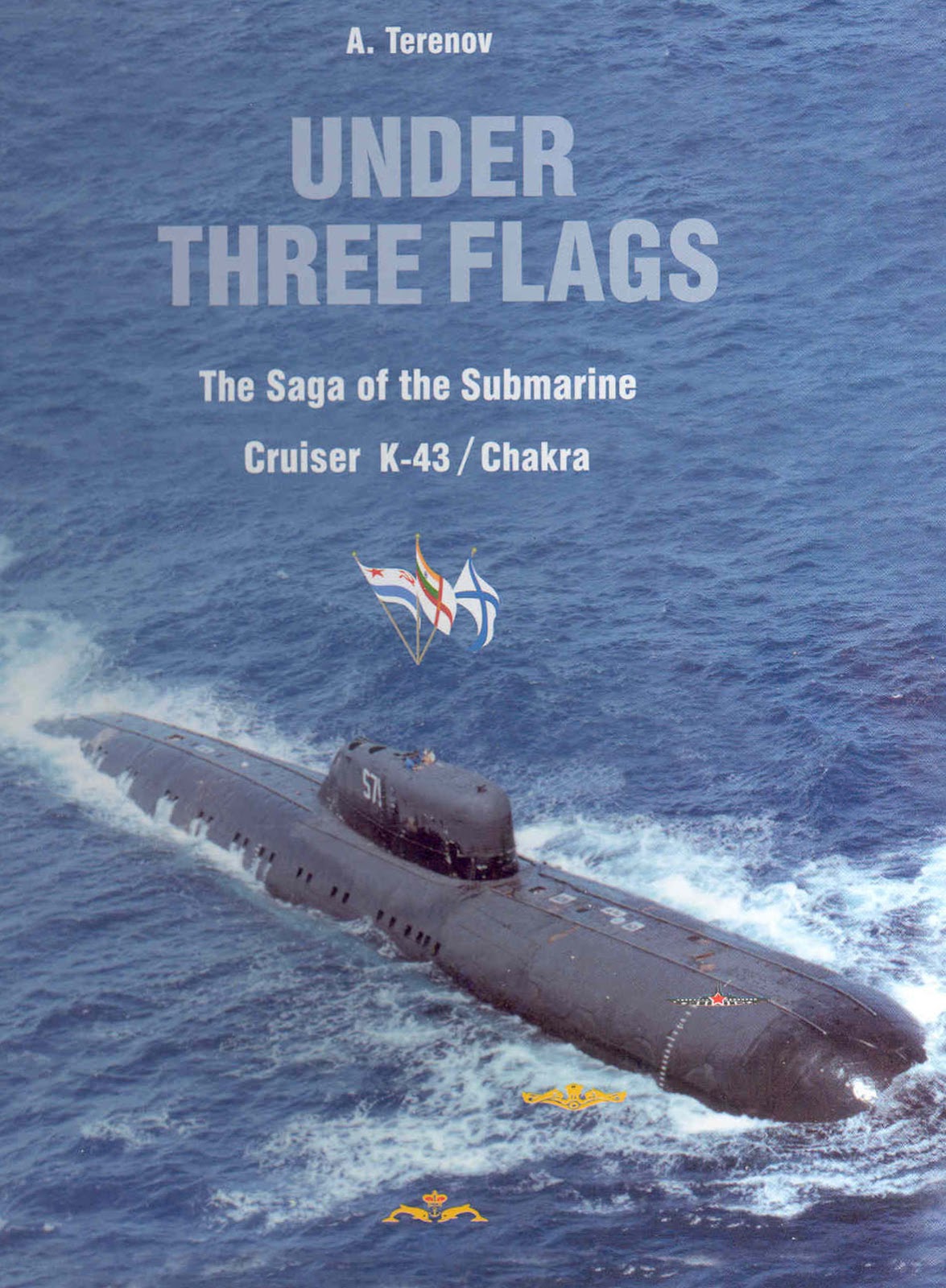- Joined
- May 26, 2010
- Messages
- 31,122
- Likes
- 41,042
A Must-Read For All Submariners


TRISHUL: A Must-Read For All SubmarinersThis is the first and only definitive account the dry-leasing of the Project 670 Skat/K-43 INS Chakra/S-71 SSGN, written by Capt Alexander Ivanovich Terenov and titled titled Under Three Flags The Saga of the Submarine Cruiser K-43/Chakra, which is now available in English after being translated by Vice Admiral (Retd) R N Ganesh, INS Chakra's first Captain. Since this book is a translation from the original Russian script, both the Indian translator and its publisher are outside the purview of India's Official Secrets Act of 1923, which would otherwise have been applied against both had the narrative been of totally Indian origin. What this book reveals are the following:
· A detailed account of the origins of India's quest for acquiring the Project 670 Skat/K-43 Chakra SSGN, beginning in 1982 when the then Rear Admiral V P S Shekhawat a pioneer submariner trained in UK and who later became the Chief of Naval Staff (CNS), inspected the K-43 in 1982 in Murmansk and recommended its dry-lease. The book describes how the K-43 was tropicalised at the Zvezda Shipyard, and how the three Indian Navy Captains-designate R N Ganesh, S C Anand and R K Sharma along with their three sets of crew complements (whose training programme began in batches from 1985 and involved 100 days of supervised underwater operations), operated the K-43 for the three years of the dry-lease. Though the K-43 had 70 crew-bunks, it at times had a crew complement of 200. During one training sortie the SSGN was continuously at sea for 13 days.
· The writer, then as a young Captain 3rd Tank Terenov, was appointed as Commanding Officer of K-43 in 1983 for type-rating the Indian Navy's submariners for the K-43 at the training centres at Obininsk, Kamchatka and Vladivostok's Vtoraya Rechka suburb of Vladivostok and the nearby Bay of Ulysses. Captain 1st Rank Dmitri Sergeivich Kasper Yust was appointed CO of the training centre, with the entire type-rating and SSGN operationalisation schedule being supervised by Admiral A A Belousov through to April 1986.
· The K-43's final dry-lease contract was due for signing by July 1987, followed by commissioning in December 1987 at Vladivostok. However, at the last minute, the Kremlin had second thoughts about allowing foreigners on board the K-43, ostensibly due to pressure applied on Russia by the US. About 10 days after this happened, the then Indian PM Rajiv Gandhi made a personal plea to the then Soviet Communist Party's Secretary-General Mikhail Gorbachev, following which the ban imposed on the Indian submariners was lifted and they were allowed back into the SSGN.
· The K-43, by then already 20 years old, was finally commissioned as S-71 INS Chakra on January 5, 1988 as part of the Navy's 6th Submarine Squadron at a low-key ceremony held in -25 degrees Celsius by the then Indian Ambassador to the USSR, T N Kaul and the C-in-C of the Soviet Navy's Pacific Fleet, Admiral G A Khvatov. While positioned in the South China Sea en route to Vizag, the submerged S-71 was met by an Indian Navy escort vessel and as the two of them entered the Singapore Straits, the S-71/Chakra had to surface while transiting the Malacca Straits, during which she was first photographed by the P-3C Orions of the RAAF that were operating out of TUDM Butterworth air base off Penang, as part of the ANZMIS arrangements.
· S-71/INS Chakra was used extensively, travelling 72,000 nautical miles (133,000km), and the SSGN's PWR remaining active for 430 days during a three-year period (rather low by Western standards). Five Ametist-15 (SS-N-7) anti-ship cruise missiles and 42 torpedoes were fired, all under Russian supervision. An accident on board the SSGN in 1989 resulted in a fire breaking out and loss of on-board power, but was successfully contained, there was no radioactive leakage to the SSGN or the environment, and the vessel succeeded in returning to Vizag on its own power. Subsequent repairs at Vizag supported by representatives of the Afrikantov Design Bureau took three months to complete.
· The book describes for the very first time the layout of the berthing facilities and the Shipbuilding Centre (SBC), plus related logistics facilities located alongside such as a navigation systems/sensors repair workshop, a three-storey decontamination and radioactive safety service building, captive power-generation installations, high-pressure air and chilled water storage tanks for air conditioning, and shore-based accommodation facilities for the SSGN's crew complement.
· In 1990, India had requested an extension of the SSGN's dry-lease, but this was refused by the Kremlin. She subsequently went back to Vladivostok in January 1991 while being escorted by an Indian Navy AOPV, under the command of Captain R K Sharma, who is presently serving with India's National Security Council Secretariat.
